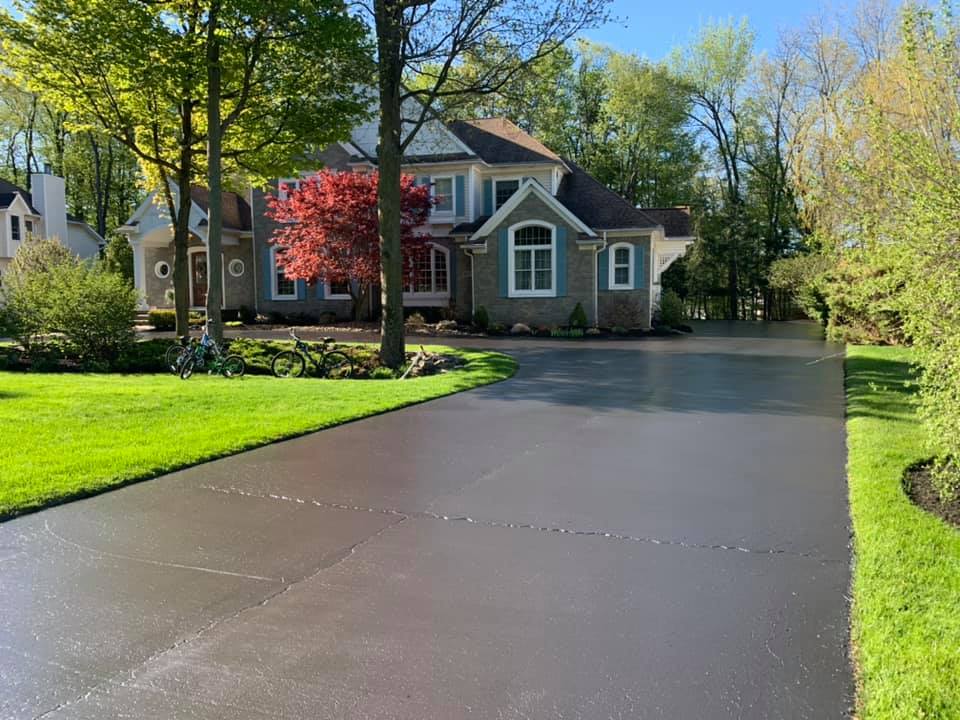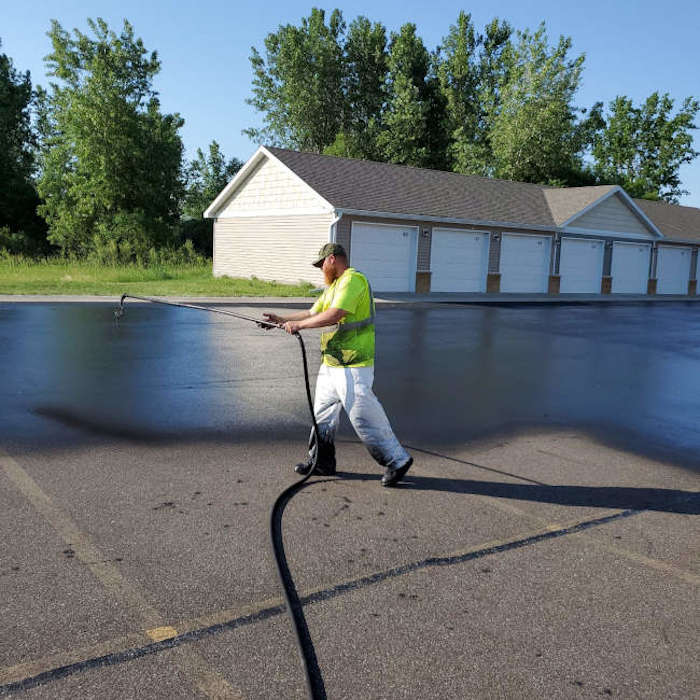Discover the Power of Industrial Parking Area Paving and Asphalt Sealing
Discover the Power of Industrial Parking Area Paving and Asphalt Sealing
Blog Article
Hot Mix Asphalt: A Sustainable Remedy for Sidewalk
Warm Mix Asphalt (HMA) has actually emerged as a leading sustainable selection for sidewalk solutions, providing a myriad of ecological advantages and innovative technologies. Its capacity to reuse materials and decrease energy consumption offers an engaging situation for its adoption in roadway building and construction projects. The long-lasting efficiency and resilience of HMA make it a favored option for framework advancement. As the need for environmentally friendly building techniques expands, discovering the subtleties of HMA's sustainability can give useful understandings right into the future of sidewalk solutions.
Environmental Advantages of Warm Mix Asphalt

Furthermore, Hot Mix Asphalt aids to alleviate urban warmth island effects. Its dark shade soaks up sunshine, decreasing the quantity of warmth showed back into the ambience compared to lighter-colored pavements. This can reduce ambient temperatures in metropolitan locations, decreasing the need for air conditioning and eventually lowering energy intake.
On top of that, Hot Mix Asphalt adds to improved stormwater management. Its permeable nature permits water to recharge and penetrate the sidewalk groundwater supplies, decreasing drainage and the danger of flooding. These environmental benefits make Warm Mix Asphalt a lasting selection for leading roads and highways.
Power Efficiency in HMA Production
Is power effectiveness a vital factor in the manufacturing of Hot Mix Asphalt (HMA)? Definitely. Power plays a considerable duty in the manufacturing of HMA, impacting both cost and ecological sustainability. One essential element of energy effectiveness in HMA production is using cozy mix asphalt (WMA) technologies (commercial parking lot paving). WMA permits the mixing and placement of asphalt at reduced temperature levels contrasted to typical hot mix asphalt, leading to decreased energy usage during manufacturing. This process not just decreases fuel usage yet also reduces greenhouse gas emissions, making it a much more eco-friendly alternative.
Additionally, innovations in plant modern technologies have led to even more energy-efficient HMA production processes. By optimizing power use in HMA manufacturing, the industry can reduce its carbon footprint while keeping high-grade sidewalk materials.
Recyclability of Hot Mix Asphalt
The recyclability of Hot Mix Asphalt (HMA) is a crucial element of its sustainability and lasting ecological effect. HMA is among the most recycled products in the USA, with over 100 million lots of redeemed asphalt pavement (RAP) being reused each year in new pavement building. Reusing HMA provides a number of ecological advantages, such as decreasing the requirement for virgin materials, reducing energy usage throughout see page production, and reducing internet the amount of waste sent to land fills.
The process of reusing HMA includes grating the existing sidewalk, crushing it into smaller pieces, and blending it with brand-new accumulation and asphalt binder to develop a recycled mix. This recycled mix can often perform in addition to or perhaps much better than traditional HMA, while needing less raw materials and creating reduced greenhouse gas discharges. By integrating RAP right into brand-new sidewalk projects, road companies can conserve natural sources, lower costs, and lessen the ecological footprint of roadway construction and upkeep tasks. In general, the recyclability of HMA plays a considerable role in promoting sustainable practices within the sidewalk sector.

Long-Term Efficiency of HMA
Asphalt pavements demonstrate longevity and resilience over an extensive period, reflecting the lasting efficiency of Hot Mix Asphalt (HMA) The durability of HMA can be credited to its capability to stand up to rush hour lots, severe weather, and the results of aging. Research studies have actually shown that properly designed and properly built HMA sidewalks can last for twenty years or even more with regular maintenance. The secret to making best use of the long-term performance of HMA lies in using high-grade products, complying with best practices in building, and carrying out reliable upkeep methods. Proper water drainage, routine assessments, and prompt fixings are vital for preserving the architectural honesty of HMA pavements in time. Furthermore, advancements in HMA innovation, such as making use of polymer-modified binders and cozy mix asphalt, have further improved the resilience and durability of HMA pavements. By focusing on quality building and maintenance methods, HMA proceeds to show itself as a economical and sustainable solution for resilient pavement facilities.

HMA: Toughness and Sustainability
Showing both resilience and sustainability, Hot Mix Asphalt (HMA) has actually become a keystone in the building and construction of long-lasting sidewalk infrastructures - hot mix asphalt. HMA's durability comes from its ability to stand up to heavy loads, severe climate problems, and high web traffic quantities, making it a dependable selection for highways, freeways, and airport paths. The structure of HMA, which generally includes accumulations, binder, and filler, plays an essential duty in enhancing its longevity and resistance to deterioration
Furthermore, HMA's sustainability depends on its recyclability and energy-efficient production procedure. The ability to recycle recovered asphalt pavement (RAP) in brand-new HMA blends lowers the need for virgin materials and minimizes the environmental impact of pavement building and maintenance. In addition, the energy performance of generating HMA lies in its lower mixing temperature levels contrasted to other pavement products, causing decreased energy intake and greenhouse gas exhausts.
Conclusion
In conclusion, warm mix asphalt (HMA) uses a sustainable option for pavement with its environmentally pleasant features. home HMA's recyclability, energy efficiency in manufacturing, and long-lasting toughness make it a green option for road building and construction.
HMA is one of the most recycled products in the United States, with over 100 million loads of redeemed asphalt pavement (RAP) being recycled annually in new sidewalk building.The procedure of recycling HMA involves grating the existing sidewalk, squashing it right into smaller sized pieces, and blending it with brand-new accumulation and asphalt binder to develop a recycled mix.Asphalt pavements show sturdiness and resilience over an extended duration, mirroring the lasting efficiency of Hot Mix Asphalt (HMA) Furthermore, developments in HMA modern technology, such as the use of polymer-modified binders and cozy mix asphalt, have additionally enhanced the longevity and longevity of HMA sidewalks. The capacity to reuse redeemed asphalt sidewalk (RAP) in new HMA blends reduces the demand for virgin products and minimizes the environmental effect of sidewalk building and upkeep.
Report this page